|
I have made a web page about one bridge before, but now I actually built more and my use is getting more accurate to the protoype. Historically, there were two of these floating pontoon swing bridges to get across the Mississippi River, one at the west channel by Marquette, Iowa, and one by the east channel near Prairie du Chien, Wisconsin. (The other Milwaukee Road pontoon draw bridges were just 'singles', at Read Landing, Minn., and at Chamberlain, South Dakota.)
My original 'bridge' was a wood 2 x 2 x 8 feet long, just a quick way to get across the room. That's the track with a long train in the foreground. |
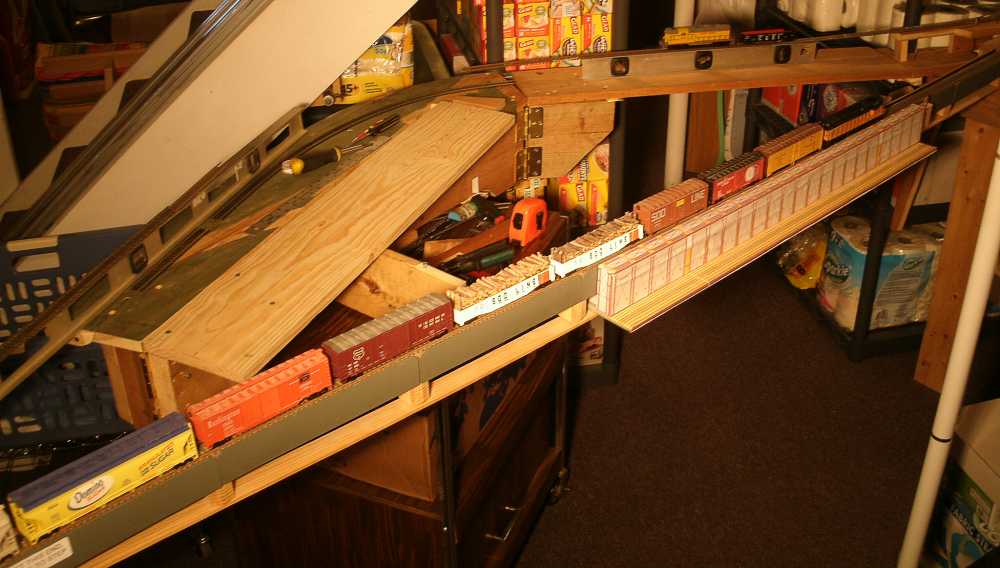
|
My original model railroad plan from 20 years ago was to make two bridges to be able to walk in through the two aisles of the basement. But back then, I took the quick direct route, and 'temporary became permanent' for a long time. It allowed a walkway for aisle 1, but not aisle 2 and 3. And it could only be operated from aisle 1. I would have to duck under the others. With two pontoon draw bridges, all three aisles have access and can be opened from any walkway. |
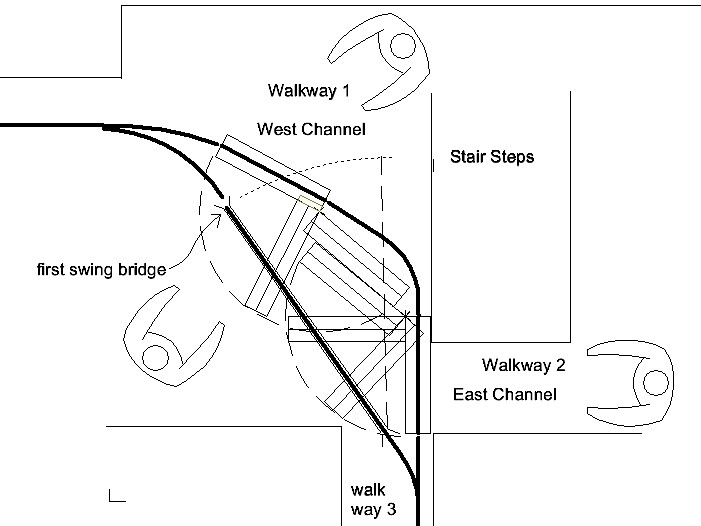
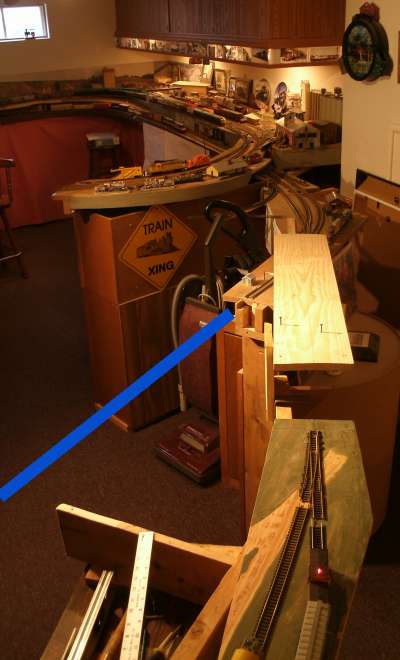 I prepared the new framework for a few weeks,
I prepared the new framework for a few weeks,
without dismantling the original route
to get things ready for a fast swap. (then it only took 2 days)
The original route is on the blue line.
This is the Iowa channel.
The bare board is the new pontoon.
Or technically, it's the river bed where the new pontoon floats (by imagination).
I had several angles to pre-measure to get a good track alignment.
| This is a test fitting of the approach for the Wisconsin channel. The new route is on the left. |
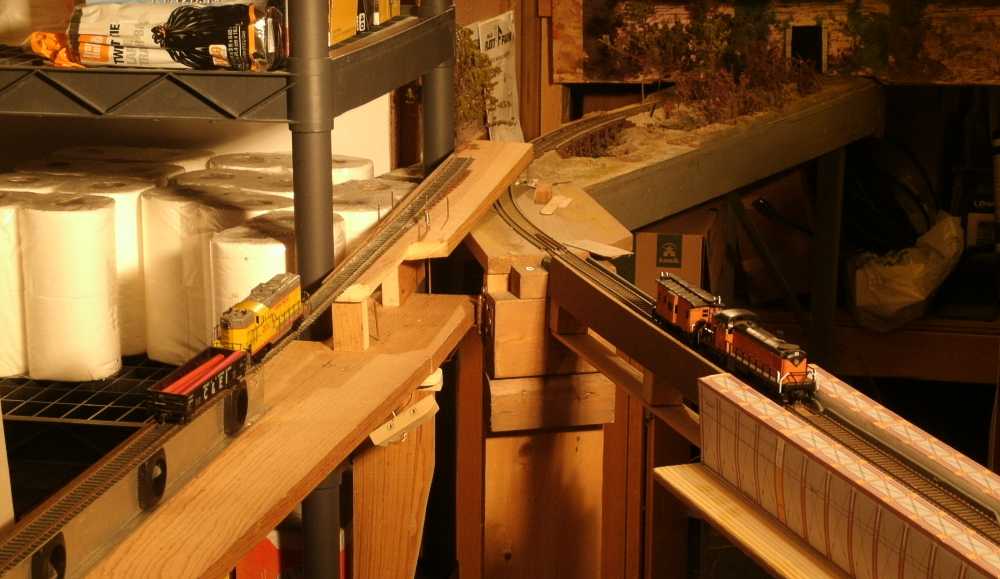
.
|
The new bridge and its support 'island' was built 10 feet away from the actual site, in my 'construction yard'. I 'floated' the original bridge into this new use. Sort of like how the real ones were moved. My assembly is built on top of a 30-year old appliance cart with 4 caster wheels. I could imagine it will be floated up the river to the new site, but actually it will be rolled. The entire thing is 22 inches wide and I can roll it anywhere to get it out of the way of other things that are stored in the basement. So, not only do I have two draw bridges to have quick access to 2 aisles, I can also roll the entire set of bridges and their island completely out of the room. Never mind that in the real world, the island was a mile wide. |
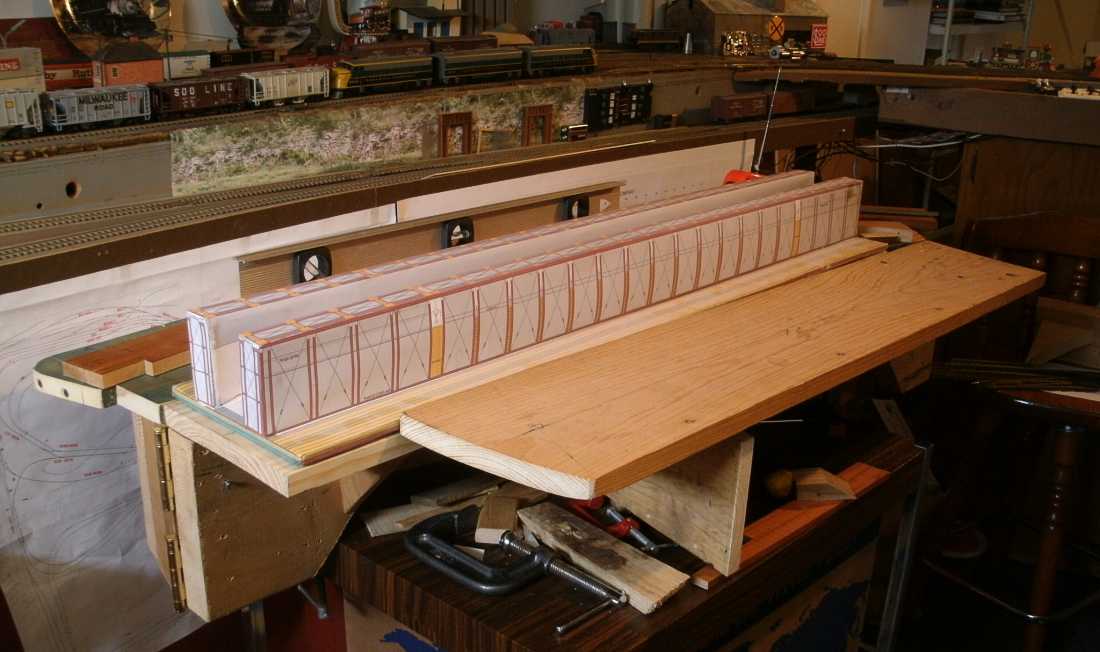
|
This is the finished new route, with the two bridges, and the island between them. This panoramic picture is a bit distorted, but looks interesting and lets me see around the obstacles in the room. |

|
The Burlington has trackage rights on my railroad. The 'temporary' paper mock up is a trestle picture from Minocqua, Wisconsin, stretched vertically from its original 14 feet tall to now be 21 feet high to fit this location. The Milwaukee Road sometimes floated the pontoons out for the winter when barge season ended, and pounded in a temporary wood trestle. I am doing something similar, using a picture, until I build another pontoon for the west channel, and then float the west channel paper mockup pontoon to this east channel. |
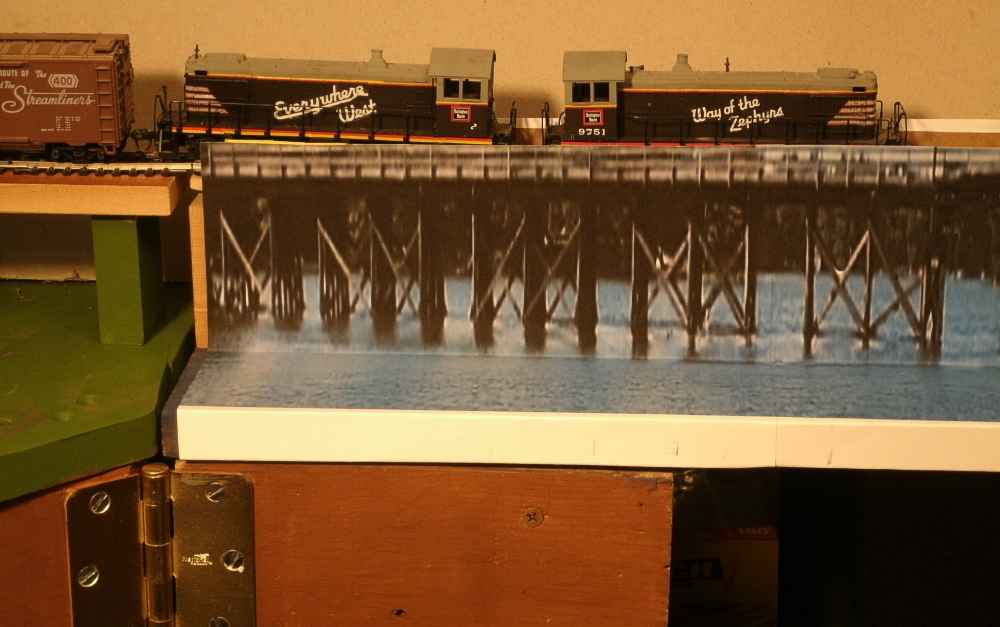
|
The Wisconsin side. I should have more bridge spans and trestles near the shore to be protoypical, but I don't have that much modeling space. The real railroad had a quarter mile of approach spans and wood pile trestles before crossing the main channel. The wood block on the bottom is a handle, so I can grab the swinging section without touching the delicate modeled parts. |
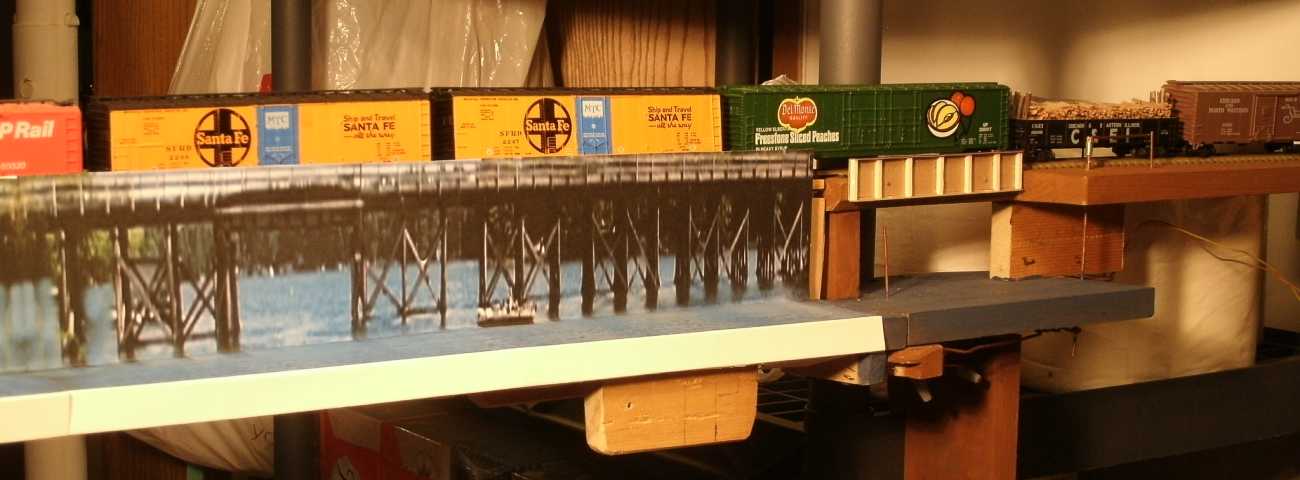
|
An SD-9 was typical power for real trains on the pontoons. Or a Prairie type steam loco. The real pontoon would settle over 3 feet in the water as the weight of the train moved onto it. I haven't modeled that effect yet, but I am considering it for the future, when I build a real model from wood sticks and cardboard plates. My water is painted blue. This is the upper Mississippi, not the the muddy Missourri. |
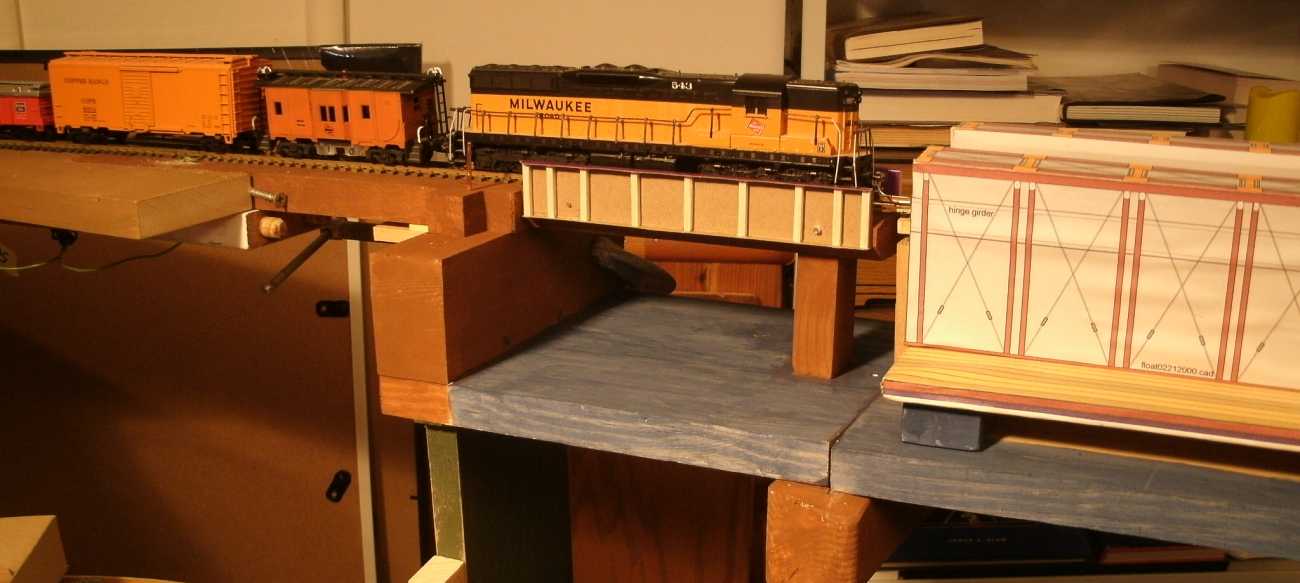
|
I made some plate girder bridges from cardboard boxes and strip wood. It's just high enough to keep any derailed cars from landing on the floor. Needs some paint. One side is cardboard, the other side shows Girl Scout cookies. (I need more cardboard, please send cookies.) The prototype had lots of vertical wood piling under their girder and truss bridges, and I still have to add some 'decorative' piling to simulate that. |
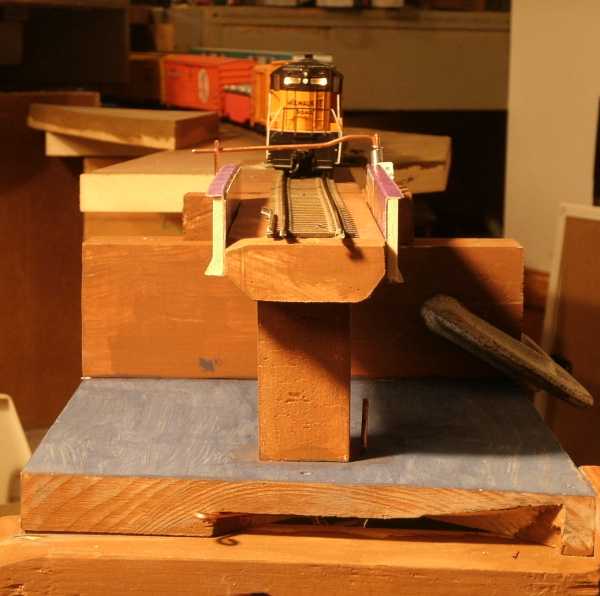 .
.
While the draw is open, I rely on a gate to avoid accidents.
Down below the 'water line', there is a slot with a wire loop that 'feels' the bridge swinging in to place.
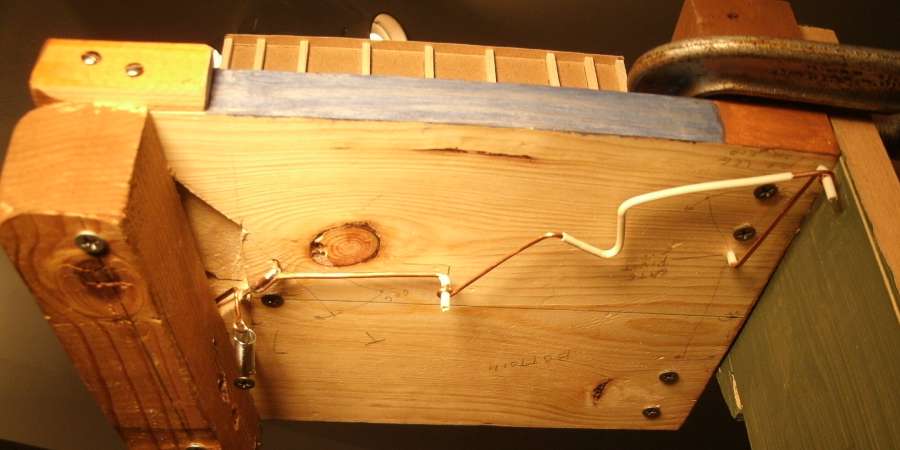 Underneath, there are wire pivot cranks and push rods to automatically control the gate.
Underneath, there are wire pivot cranks and push rods to automatically control the gate.
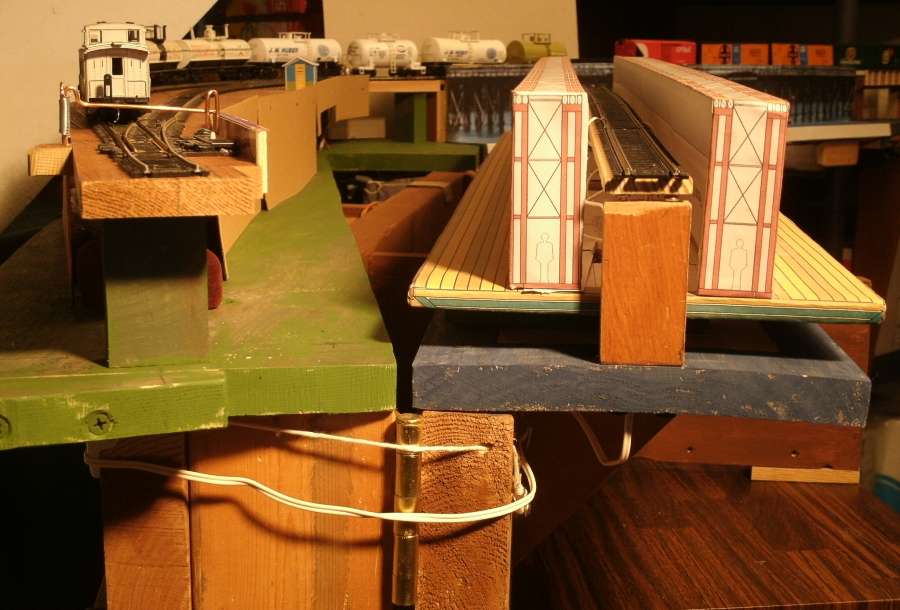 This is looking at the hinge pivot end, swung more than 'full open'. Normally, the pontoon is swung just 90 degrees to allow river barges to pass. Or people to walk through.
This is looking at the hinge pivot end, swung more than 'full open'. Normally, the pontoon is swung just 90 degrees to allow river barges to pass. Or people to walk through.
It's like a Dutch door.
There is a white string that pulls the safety gate.
The white wires feed track power to the moving section.
This bridge is difficult to keep the track ends aligned, since the hinges are over 3 inches below the rails.
Normally, I wouldn't suggest such an unmanageable design, but it is true to the prototype.
The tracks stay level, at about 21 feet above the lowest water level,
and the pontoon is adjusted higher or lower to match the river level.
I use wood blocks to raise the pontoon to simulate water levels.
The picture here would be a 14-foot deep channel. The minimum was 6.
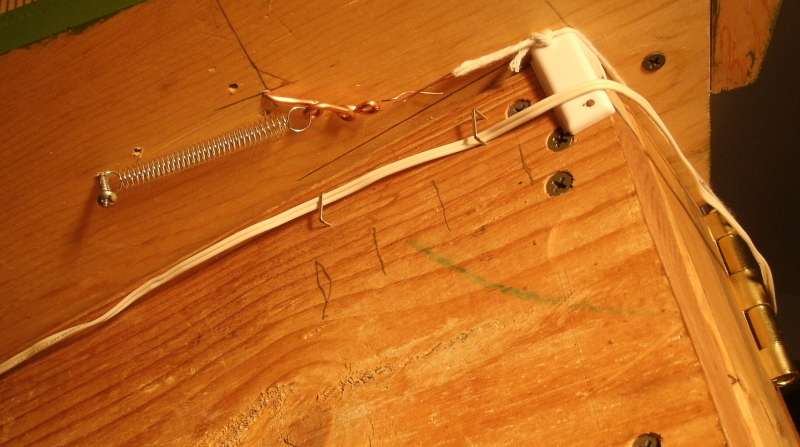 Underneath the board is a spring and linkage to swing this gate.
Underneath the board is a spring and linkage to swing this gate.
There are 4 automatic gates, to prevent dunking a train into the river.
I usually have one close call a year with a locomotive heading over an edge of any drawbridge, and about 5 cabooses headed for the drink.
My problem is the crew is watching the head end, but doesn't realize what's going on at the rear end.
I put 2 door hinges on a 2x8. It's enough to carry the weight during the swing.
At both ends of the movement, the outer end of the bridge rests on a board and takes some pressure off the hinges.
I didn't run the lower hinge closer to the floor where it could be stronger.
But this does give space under the bridge. If I get caught with a train on the bridge and can't readily clear it,
then I can still crawl under to get to the other side. It is 40 inches above the floor.
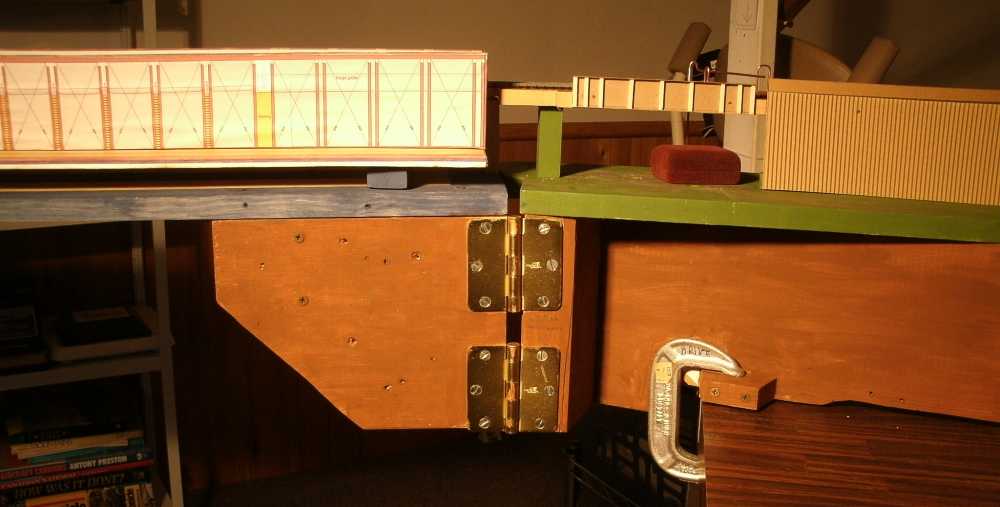
| This is each bridge, swung half-way open. |
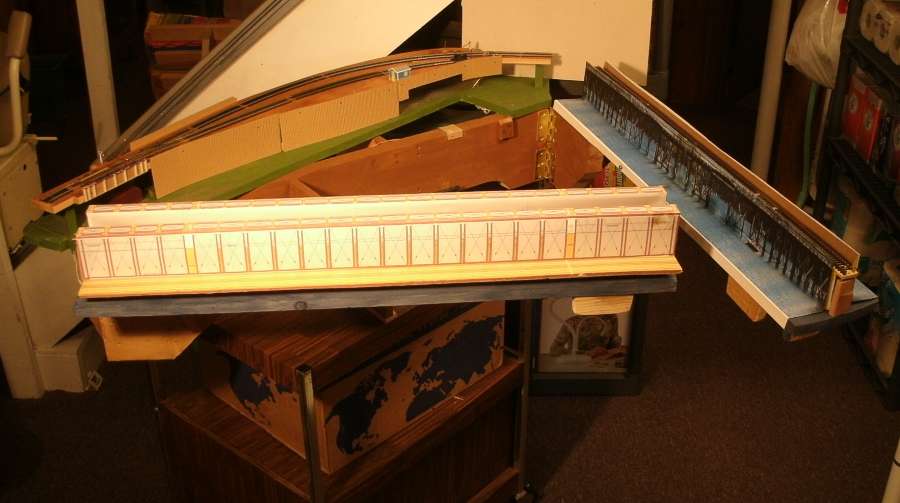
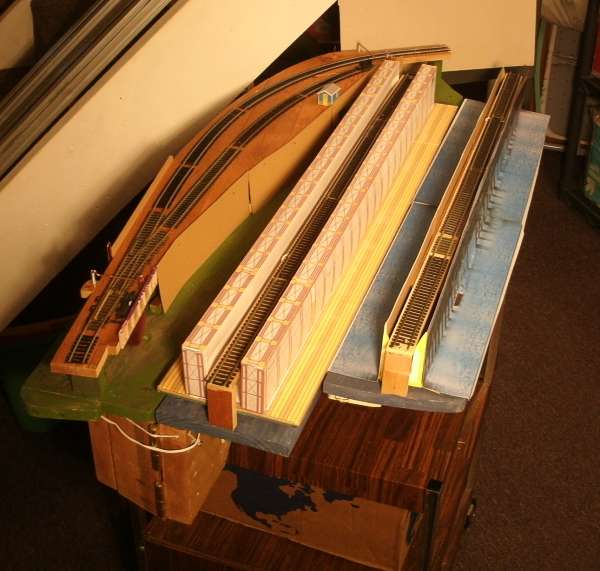 And this position isn't prototypical, but it is very useful for storage and having both aisles wide open.
And this position isn't prototypical, but it is very useful for storage and having both aisles wide open.
The two pontoons nest side by side to save space. Each swing is 39 inches long.
And the whole cart is 22 inches wide, and can be rolled further out of the way.
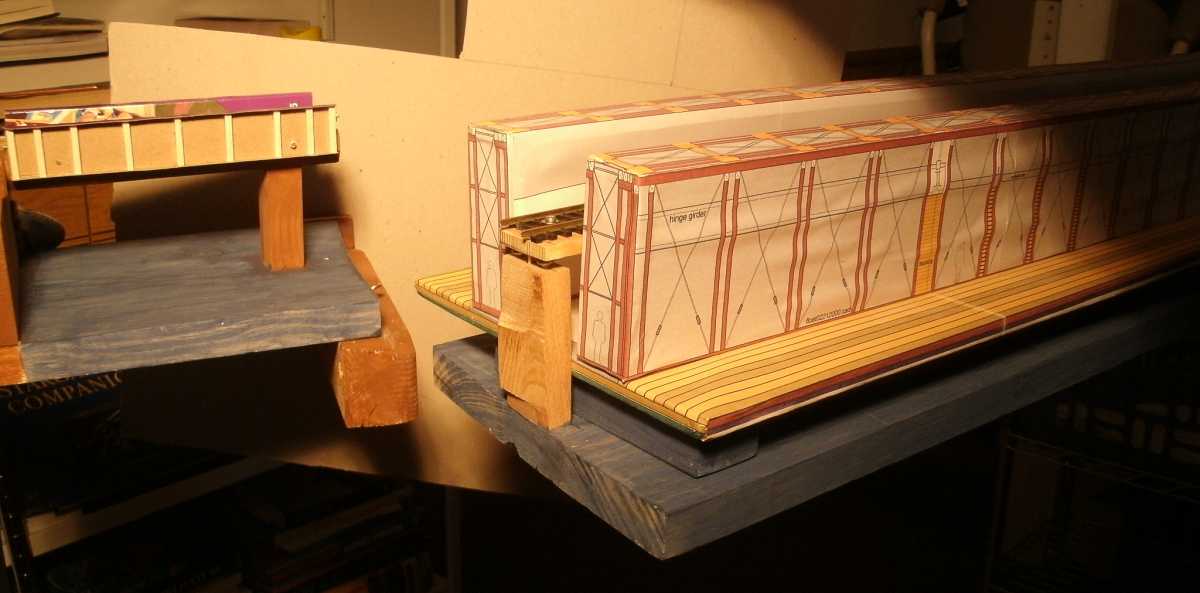
The view from above, when the swing is in place.
The C-clamp is temporary until I get the final adjustment set for the support leg of the 'shore approach'. .
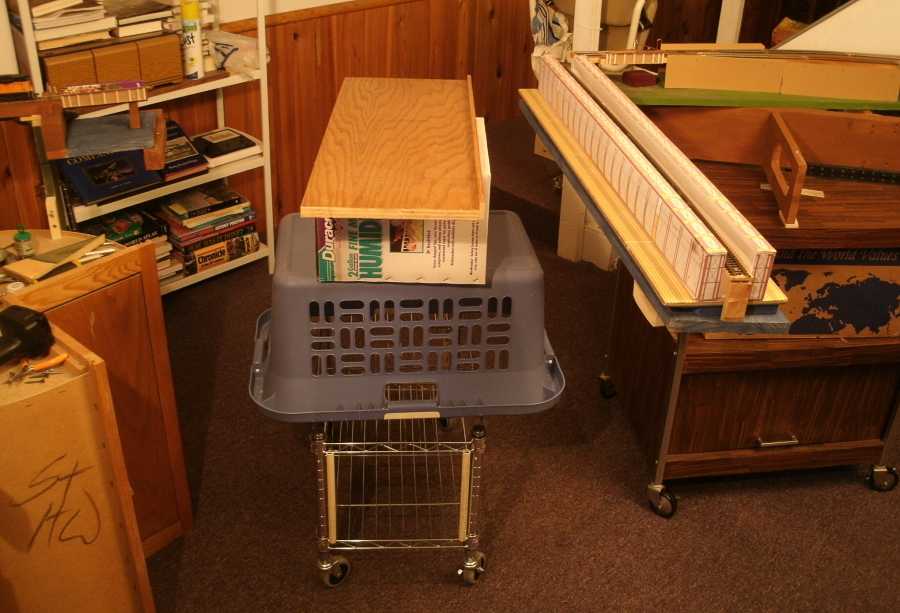
This is a copy of the postcard that I bought in the 1970's. (picture credit to Marjory Goergen)
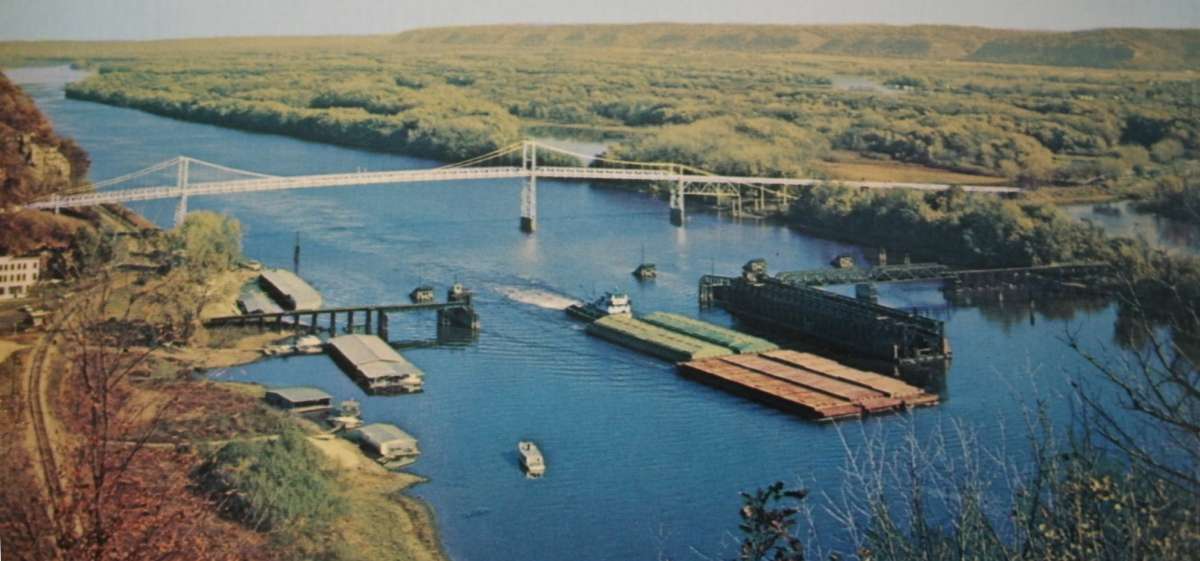
My scale model of Lil Charley Missisissippi River tow boat with simulated water and some improvements to the bridge piers.
Link to my earlier page offering scale model plans and information about the pontoon bridge,
This is what it looks like 6 months later, when it is nearly done: to My Main Index Page on the TrainWeb site.
This page was filmed in April 2020. |